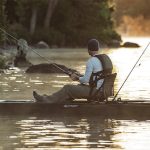The U.S. House Natural Resources Committee passed legislation Thursday that will provide full funding for land conservation and outdoor recreation – something long sought after by Outdoor Industry Association and conservation groups.
“OIA greatly appreciates today’s committee action to fully fund LWCF, Chairman Rahall’s leadership on this issue and the support of so many members on the House Natural Resources Committee,” said Amy Roberts, Vice President of Government Affairs for OIA. “We, along with many of our colleagues in the recreation and conservation community, have been fighting for years for full funding of this important program, its investment in close-to-home recreation and the goal of reconnecting Americans with our nation’s land and water.”
LWCF is supposed to receive $900 million per year a drop in the bucket of offshore revenues that typically tally over $5 billion but each year Congress, has diverted much of the LWCF revenue to other purposes. Full funding has been appropriated only once in the 45-year history of the LWCF, and recently declined to a low of $138 million in 2007. This shortfall has resulted in a land protection and outdoor recreation backlog of unmet funding needs across our National Forests, Fish and Wildlife Refuges, National Parks and other public lands, federal public lands, and state and local parks.
In spite of rarely receiving its due, LWCF has been instrumental in many of the places that are most dear to us as a nation. From local parks and playgrounds, where kids can get outside to play, to greenbelts and recreational trails that connect and enhance local communities, to state parks that provide hiking, biking, and camping and help to sustain wildlife, to federal public lands used for hunting, fishing, paddling, and our most pristine national parks, wildlife refuges, and wilderness areas LWCF has provided a continuum of conservation that has touched all Americans.














